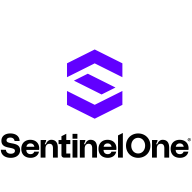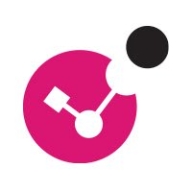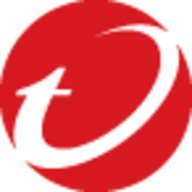


Check Point Harmony Email & Collaboration and Trend Vision One - Cloud Security are key players in email and cloud security. Check Point leads with superior phishing detection and API capabilities, while Trend Vision excels in cloud workload protection and security analysis.
Features: Check Point Harmony Email & Collaboration is praised for its advanced threat protection with DLP, high integration with platforms like Office 365, and strong API capabilities, offering exceptional phishing detection and sandboxing. Trend Vision One - Cloud Security emphasizes extensive security analysis, visibility into microservices, and robust intrusion prevention features suited for multi-cloud environments.
Room for Improvement: Check Point Harmony Email & Collaboration needs to address high false positive rates, slow support response, and enhance SIEM tool integration. Trend Vision One - Cloud Security could improve its marketing documentation, user guidance, and especially automation for better multi-cloud support.
Ease of Deployment and Customer Service: Check Point Harmony Email & Collaboration is primarily deployed across public, private, and hybrid cloud environments, but is criticized for support delays and handling of false positives. Trend Vision One - Cloud Security is noted for fast and effective support despite some slow response time concerns, with deployment across similar environments.
Pricing and ROI: Check Point Harmony Email & Collaboration offers competitive but sometimes costly pricing for SMEs, appreciated for a flexible licensing model and high ROI in reduced data breaches. Trend Vision One - Cloud Security, with moderate pricing and recent increases, balances its feature set well, with cost-scaling aligned with infrastructure changes, ensuring control over expenses. Both solutions showcase ROI primarily in security enhancements and operational efficiencies.
The detailed information PingSafe gives about how to fix vulnerabilities reduces the time spent on remediation by about 70 to 80 percent.
After implementing SentinelOne, it takes about five to seven minutes.
Our ability to get in and review our vulnerability stance, whether daily, monthly, weekly, or whatever it might be, has drastically improved over our prior provider.
The product has proven to be reliable and compatible with our network infrastructure.
When we send an email, they respond quickly and proactively provide solutions.
They took direct responsibility for the system and could solve queries quickly.
Having a reliable team ready and willing to assist with any issues is essential.
Customer support is of high quality.
Support issues exist with the Check Point company itself, not necessarily the product.
I would rate customer support eight out of ten.
The technical support is good.
As soon as we need to add somebody, we just add them to NinjaOne, and then we have a script set up where it automatically deploys and adds them to whichever group we need.
I would rate it a 10 out of 10 for scalability.
Scalability is no longer a concern because Cloud Native Security is a fully cloud-based resource.
I would rate the scalability of Check Point Harmony Email and Collaboration as nine out of ten, indicating high scalability.
In my experience, there has been 100 percent uptime.
SentinelOne Singularity Cloud is incredibly reliable.
The cloud console is very resilient.
If I had to ask for anything to make it easier, it would be signed images that are GPG signed and a public repository where we can get the bits from.
If they can merge Kubernetes Security with other modules related to Kubernetes, that would help us to get more modules in the current subscription.
As organizations move to the cloud, a cloud posture management tool that offers complete cloud visibility becomes crucial for maintaining compliance.
Check Point should integrate with features available in Barracuda - like more advanced threat management.
An integrated appliance from Trend Micro would streamline the process, providing customers with a pre-configured solution and removing dependencies on external hardware.
With very little negotiation involved, we just let them know what we could pay and they were willing to meet us at slightly above what we paid with Sophos, which was still very fair for what we were looking at.
The price was very, very important to us, and it came down to the price when we were doing our evaluations WatchGuard and SentinelOne.
Covering our 50,000 endpoints would have nearly bankrupted most security programs, even well-funded ones like ours.
I consider the pricing to be a bit expensive, similar to other solutions.
The pricing is lower compared to what I used before.
The pricing is reasonable, rated five out of ten for affordability.
The Trend Vision One pricing is reasonable.
The real-time detection and response capabilities of SentinelOne Singularity Cloud impressive because it is a platform that uses artificial intelligence to determine what is normal and what is abnormal and can lock down any virus it may encounter.
We were shown how ransomware can be immediately stopped in real-time. That was huge.
Our previous product took a lot of man hours to manage. Once we got Singularity Cloud Workload Security, it freed up our time to work on other tasks.
The most valuable feature is spam detection and phishing site prevention, which Microsoft couldn't catch, yet Check Point does.
Check Point Harmony Email and Collaboration offers online support and has tight integration with Microsoft.
The protection and scanning of emails are also appreciated, as they secure everything in the email spectrum.



SentinelOne Singularity Cloud Security protects cloud workloads, offering advanced threat detection and automated response. It integrates seamlessly with cloud environments and secures containerized applications and virtual machines against vulnerabilities.
SentinelOne Singularity Cloud Security is renowned for its efficiency in mitigating threats in real-time. The platform integrates effortlessly with existing cloud environments, ensuring robust cloud security management with minimal manual intervention. Securing containerized applications and virtual machines, it excels in threat intelligence and endpoint protection. However, improvements are needed in performance during high workload periods, and more integrations with third-party tools and better documentation would be beneficial. Users often find the installation process complex, support response times slow, and the dashboard's navigation unintuitive.
What are the key features of SentinelOne Singularity Cloud Security?In specific industries, SentinelOne Singularity Cloud Security is implemented to safeguard critical data and infrastructure. Organizations in finance, healthcare, and technology depend on its real-time threat detection and automated response to protect sensitive information. Its ability to secure containerized applications and virtual machines is particularly valuable in dynamic environments where rapid scaling is necessary.
Check Point Harmony Email and Office is a cloud-based software offering complete protection to stop malware attacks through emails. The software is designed to provide protection for organizations using Office 365, G Suite, Google Workspace, and all other collaboration and file-sharing apps. Access permissions can be granted and custom policies can be defined for any user of choice.
Check Point Harmony Email and Office identifies and blocks advanced malware, phishing, and ransomware attacks in real time before they reach the user’s inbox. In turn, this also helps protect sensitive business data from breaches. Harmony Email and Office was the first solution to implement machine learning, API, and AI for email security, and will ultimately prevent any attempts at account takeover via agentless multi-factor authentication.
What is Complete Protection?
Check Point Harmony Email and Office offers a superior catch rate for collaboration apps and cloud email with their API-based solution that detects attacks that other solutions miss, including account takeover, supply chain attacks, ransomware, and BEC. The complete protection offers:
Reviews from Real Users
Check Point Harmony Email and Office offers a revolutionary prevention solution to stop malware attacks through emails. Users particularly like its visibility and the ability to protect sensitive business data.
David U., a CISO at IMC companies, notes, "It provides visibility of events, what's going on with the environment, what we're missing with our other solution, and the user behavior."
Mantu S., a senior technology architect at Incedo Inc., writes, "We are able to protect sensitive business data and maintain regulatory compliance with advanced data leak prevention (DLP)."
Trend Vision One- Cloud Security Security provides comprehensive cloud security, threat protection, and compliance monitoring. Users commend its advanced features, ease of use, and strong performance in keeping digital assets safe. The platform improves efficiency and productivity for organizations while offering excellent customer support.
We monitor all Cloud Workload Protection Platforms (CWPP) reviews to prevent fraudulent reviews and keep review quality high. We do not post reviews by company employees or direct competitors. We validate each review for authenticity via cross-reference with LinkedIn, and personal follow-up with the reviewer when necessary.